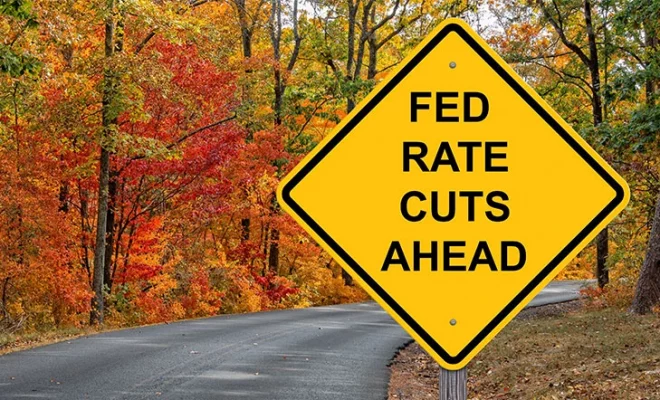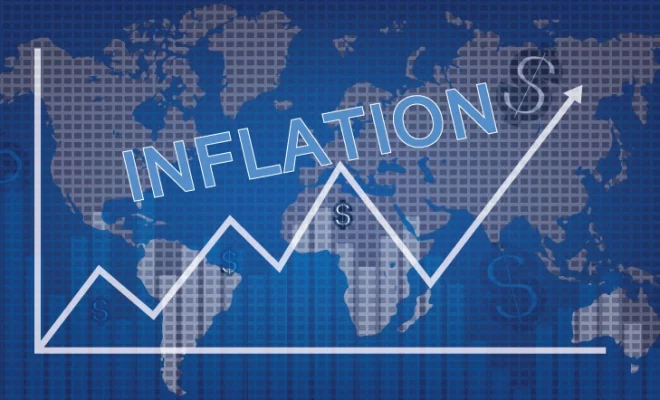What Lies Ahead for the Markets and Economy After the Fed Rate Cut?

The Federal Reserve recently announced a cut to its benchmark interest rate, setting it at a target range between 4.75% and 5.00%. This half-point cut, or 50 basis points, is more aggressive than the typical 25 basis points that are usually expected during the rate-hiking cycle. The Fed’s decision to opt for such a high interest rate cut may suggest that they are bracing for turbulence ahead. However, this may not be entirely true. It is important to understand the impact of the cut before jumping to a conclusion.
A financial advisor can help you understand what the Fed rate reduction means for the markets, the broader economy, and you as an investor. This article will also give you a better understanding and break down what history and current conditions tell us about interest rate fluctuations.
Table of Contents
Understanding federal rate cuts
Typically, the Federal Reserve adjusts interest rates to control inflation, stimulate economic growth, or, in some cases, prevent economic overheating. However, a 50-basis-point cut may suggest that the Fed is perhaps more worried about the state of the economy. This larger-than-usual cut can be a precautionary step to avoid potential economic slowdowns. In fact, many experts have pointed out that the unusually high rate cut tells the market that the Fed believes the economy might need a little help in the months ahead. The rate cut has several direct impacts. For one, it affects borrowing costs, both for consumers and businesses. Lower borrowing costs tend to stimulate spending, and companies are more likely to take out loans. Additionally, consumers may feel more comfortable financing big purchases. However, this rate cut is not just about stimulating borrowing; it may also signal a recession.
It is worth noting that the market seemed to anticipate this cut before it even happened. Several key indicators started adjusting well before the official rate cut. The 30-year mortgage rate, for example, fell from 7% in July to 6.2%, and the 10-year Treasury yield dropped from 4.4% to around 3.7%. The markets had already priced in some of the Fed’s actions, making the cut less of a surprise than what was already expected.
Let’s dig deeper into historical data. Lower interest rates are generally seen as a positive for stocks. While it is easy to assume that lower rates automatically lead to rising stock prices, the reality is a bit more complex. For example, after the first Fed rate cut in 2007, the S&P 500 fell by 2.1% in just three months. One year later, the index experienced double-digit losses as the global financial crisis unfolded. A similar situation occurred in 2001 when rate cuts happened at the same time as the dotcom bust. But this is not always the case. In some years, like 2019, markets rallied after a rate cut.
So, what makes this time different? Investors’ expectations and the broader economic outlook are crucial factors. If people feel confident that the economy is in good shape, they may be more enthusiastic about lower borrowing costs. However, if there is concern that the rate cut signals deeper economic trouble, markets could respond negatively. When rates fall, borrowing costs decline. This gives companies more flexibility as they can take out loans more cheaply. This, in turn, allows them to grow their operations and ultimately boost their profits. When corporate profits rise, stock prices usually follow behind. Additionally, lower rates often make bonds less attractive to investors because bond yields fall as interest rates drop, which pushes investors towards stocks, looking for better returns.
But here’s where things get interesting. While lower rates typically favor stocks, history shows that the immediate aftermath of a Fed rate cut is not always good for equities. In some cases, stock indexes like the S&P 500 have actually declined significantly after the first rate cut and sometimes dipped for months or even a year. So, while lower rates should theoretically benefit the stock market, investor sentiment and economic data can sometimes override this effect. In fact, one of the biggest lessons from past rate cuts is that perception can be more influential than the rate change itself. Investors’ enthusiasm for lower borrowing costs can quickly disappear if they do not feel confident about the overall economic outlook. A 50-basis-point rate cut may spark excitement at first, but if investors start believing the economy is headed for a downturn, they will focus more on the risk than on the potential boost from lower rates. In this case, the aggressive nature of the Fed’s move could also be interpreted as a sign that they are worried about deeper problems, such as a recession.
A key question on everyone’s mind is whether the Fed’s rate cut is a sign of economic weakness or strength. On one hand, data shows that lower-income consumers are feeling the pinch. The financial strain on these households could be an early indicator of broader economic issues. On the other hand, large, profitable companies are investing heavily in new technologies, particularly artificial intelligence, with the expectation of future gains. This surge in investment from corporate giants possibly negates the fear of a looming recession. Historically, rate cuts have sent mixed signals about the future of the stock market. Data reveals that since 1974, stocks have posted positive returns 80% of the time in the 12 months following the first rate cut, with an average gain of 15%. However, when a recession follows the first cut, stocks tend to perform poorly. In fact, one year after a rate cut during a recession, the stock market has been positive only 33% of the time and has an average return of negative 8%.
If the economy is able to avoid a recession, the outlook is much more optimistic. In periods where the Fed cuts rates but the economy remains stable, stocks have historically posted an average gain of 22% over the following year.
What lies next for the economy?
The Fed rate cut can impact the economy in different ways. Moreover, the Fed opting for an aggressive half-point cut, rather than the standard quarter-point, has grabbed everyone’s attention. But what does this mean for the economy and your financial decisions? Let’s explore:
1. Lower borrowing costs
Lower borrowing costs could impact both businesses and consumers. For businesses, lower borrowing costs present an opportunity to grow. Companies looking to expand or take on new projects can easily take on loans at a cheaper cost. Increased borrowing from businesses can positively impact the broader economy, boost employment, and stimulate consumer spending.
Consumers also stand to benefit from lower rates. If you are in the market for a mortgage, for example, you may be able to lock in a lower rate. With a cheaper loan, you can lower your monthly loan payments, which can save you money in the long run.
2. Makes stocks more favorable
Lower interest rates are typically beneficial for stocks. Small-cap stocks, for instance, had their best month in two decades in July, and much of that excitement was driven by the expectation of lower rates. Lower interest rates reduce the cost of borrowing for businesses and allow them to earn more profits, save money, and reinvest their gains in further growth and expansion. Rate cuts also make stocks more attractive than bonds, as lower bond yields drive up bond prices. However, history shows that the connection between rate cuts and stock market performance is not always as straightforward as it may seem. In fact, in certain periods, stock markets like the S&P 500 can actually decline in the months following the first rate cut.
3. Bonds may become less favorable
Bonds and interest rates typically share an inverse relationship. When interest rates go down, bond prices rise, as a result of which bond yields fall. This makes bonds less appealing to investors. In such a scenario, investors seeking higher returns move to the stock market. However, if investors believe that lower interest rates signal potential economic weakness, they may seek the safety of bonds despite the lower yields in exchange for stability. In the current environment, bond yields have already been trending lower, with the 10-year Treasury yield hovering around 3.7%. This decline began well before the official Fed rate cut. So, the market had already priced in this rate adjustment.
4. Impacts personal finances
Apart from businesses and the stock market, lower interest rates can also have far-reaching effects on personal finance. Cash held in savings accounts will likely see reduced returns as deposit account rates drop. Many banks had already been offering higher interest rates on savings accounts and Certificates of Deposit (CDs) as rates rose. With the Fed’s recent cut, those rates are expected to decrease over time. For example, in August 2023, a 12-month CD offered an interest rate of around 1.76%. By August 2024, the same CD offered 1.88%. However, with the Fed’s rate cut, these rates may move further downward.
Personal loans are another area where the Fed’s actions will have an impact. Interest rates on personal loans have risen sharply over the past two years, climbing from 8.73% in 2022 to 11.92% in mid-2024. Now that rates are on their way down, personal loan interest rates will follow suit, which can be a relief for borrowers. Additionally, if you have student loans, it is important to note that most federal loans have fixed interest rates, so they are not directly impacted by the Fed’s rate cuts. However, if you have private student loans with variable interest rates, you could see some changes.
Credit card interest rates have also been on the rise during the Fed’s rate-hiking cycle, jumping from an average of 16% to over 21%. With the Fed now cutting rates, credit card holders can expect lower interest charges. So, this is a good time to pay off high-interest credit card debt more quickly. If you are carrying credit card debt, you must prioritize paying down the balances with the highest interest rates as soon as possible.
5. Effect on the housing market
The housing market has been particularly sensitive to interest rate changes. Over the past two years, 30-year fixed mortgage rates soared from around 4% at the start of the Fed’s rate-hiking cycle to nearly 8% by the fall of 2023. It is worth noting that mortgage rates are unlikely to return to the record lows of 2020 when rates dipped below 3%. The long-term average for 30-year fixed mortgages is still above 7%. So, today’s rates, while lower than recent highs, are still higher than what has been experienced in the past decade. So, if you are considering a home purchase or refinancing, it is important to weigh the potential benefits of locking in at a lower rate now versus waiting to see if rates drop further.
To conclude
The impact of the Fed rate cut on the markets and the economy depends on whether the Fed’s rate cut is seen as a precautionary measure or a sign of economic trouble, such as a recession. If businesses and consumers remain confident, there could be steady economic growth. However, things could also go the other way, particularly among lower-income households. For now, it is essential to remain calm and optimistic. It is advised to keep an eye on your investments and take advantage of favorable loan terms to reduce high-interest debt.
Use WiserAdvisor’s free advisor match tool to get matched with seasoned financial advisors who can offer guidance on how to plan amidst interest rate fluctuations. Answer some simple questions about your financial needs and get matched with 2 to 3 advisors who can best fulfill your financial requirements.




















